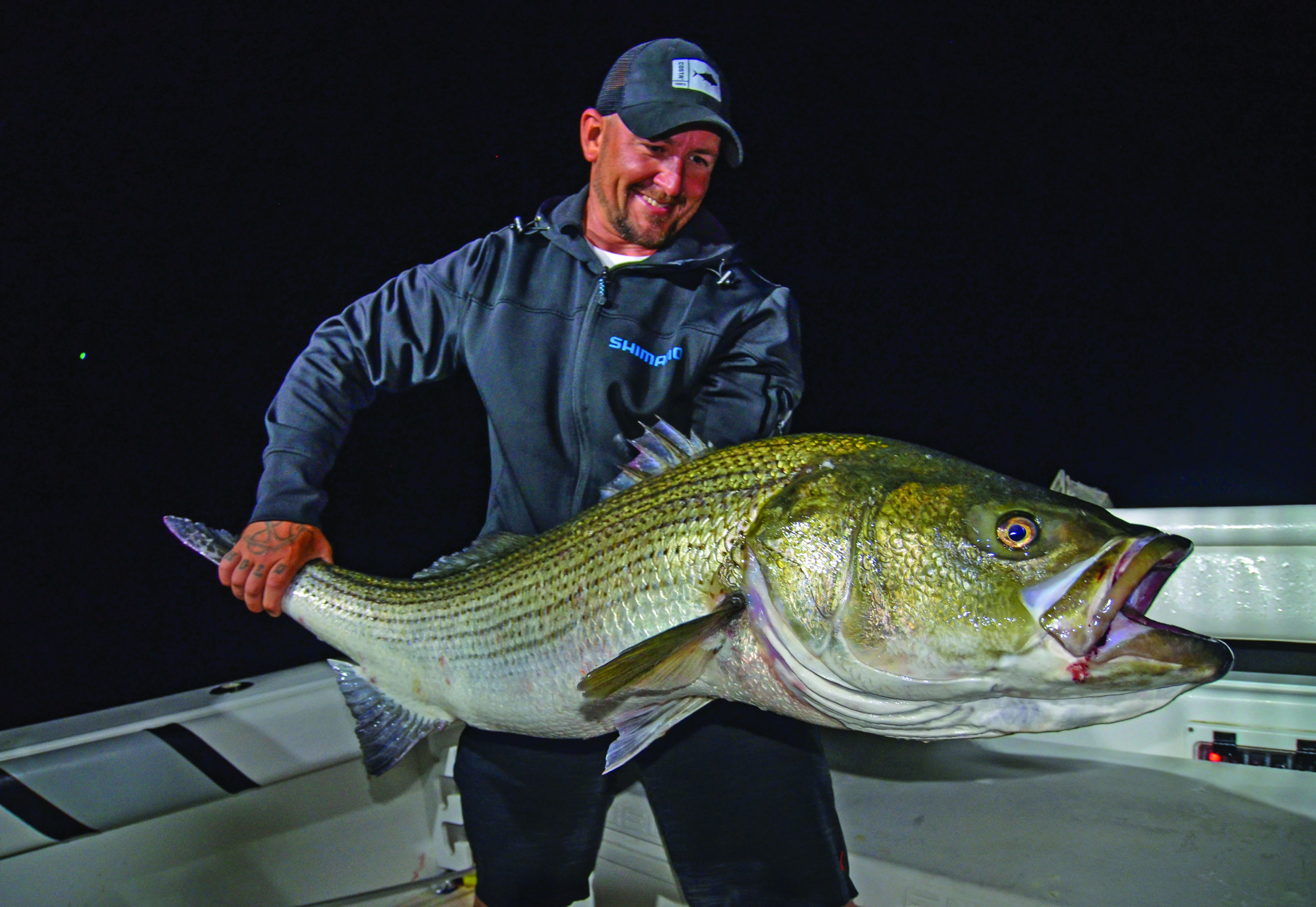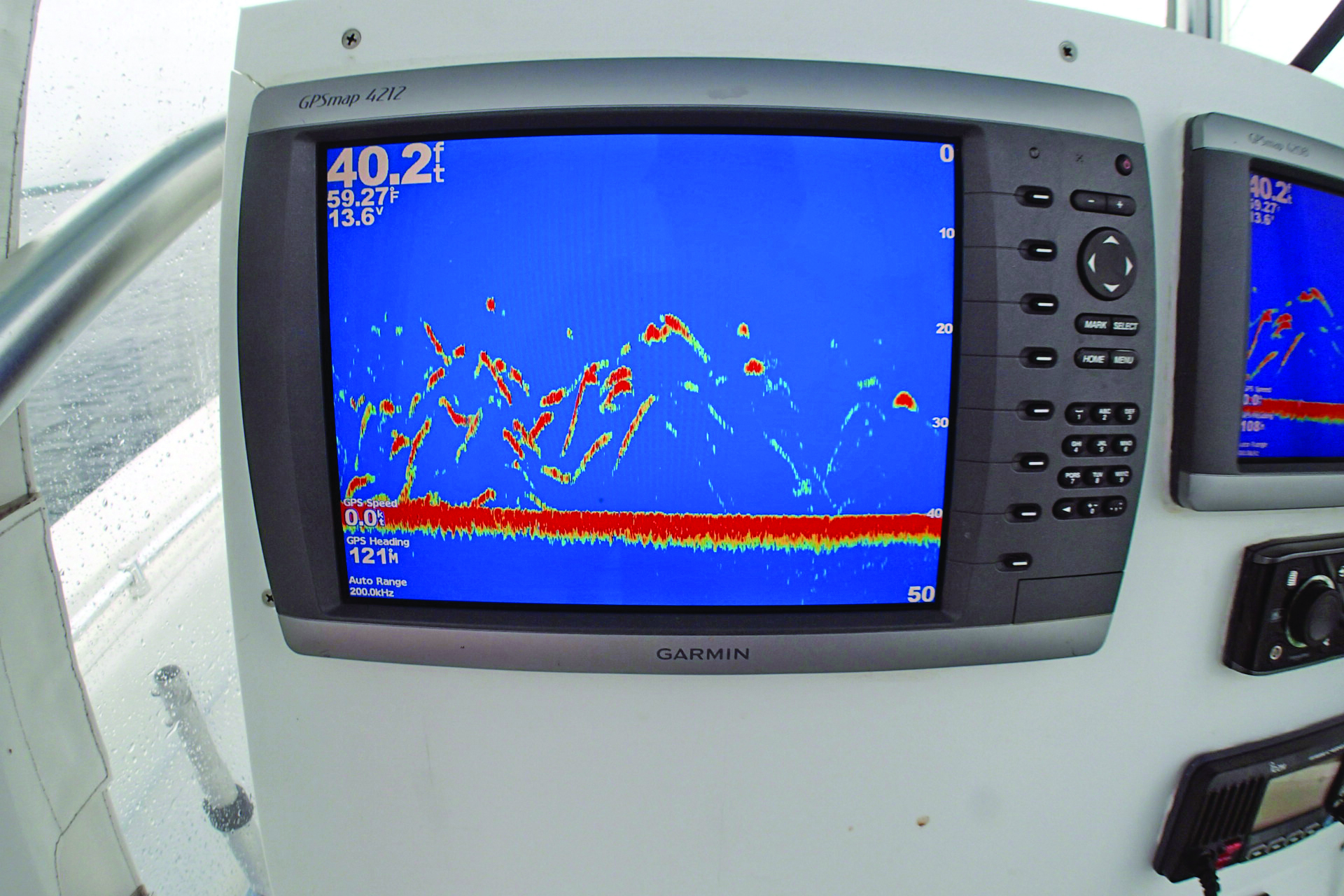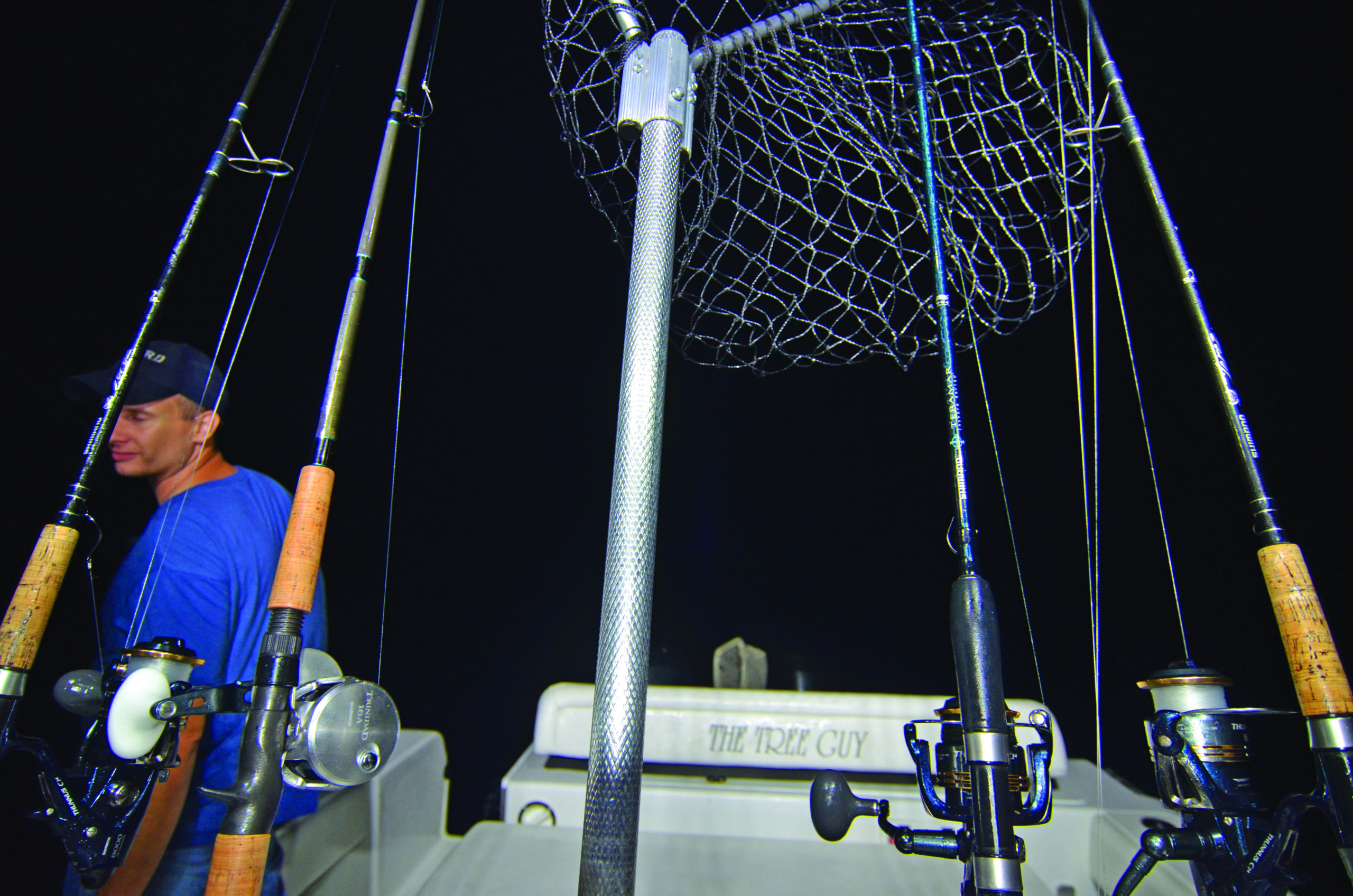Make sure you’re ready before you make your first night run to Block Island.

The initial waves of migratory stripers arrive in the Northeast in the spring, and they show up hungry. Fishing for them seems almost too easy as they feed feverishly seemingly with every tide, regardless of time of day or even weather conditions. This likely has much to do with the fact that while migrating in open water, meal opportunities are few and far between, while the calorie burn for each fish is through the roof. So when they arrive in the nutrient-rich waters of the Northeast and find thick clouds of bait like bunker, squid and herring, these fish are quick to push into the estuaries and bays where the bait has few chances to escape, and the slaughter begins.
But just as the weather is quick to shift from spring to summer, so does the best approach to targeting these fish. With longer, warmer days, these backwater areas warm up fast, which also reduces the oxygen levels, making these backwaters uncomfortable for the stripers, forcing them to relocate. This forces anglers to change relocate as well, and also to shift their game plan to the night shift.
One such place to focus these efforts is Block Island’s notorious Southwest Ledge. While many stories have covered the exciting fishery that can develop there, along with the best tactics for targeting these fish, I wanted to help those of you that haven’t yet made the run in your own boat to gain the knowledge and confidence you’ll need to make a night ride to the south side. I’ll cover common questions you may want to ask yourself before making the run in the dark, boat layout suggestions and a few other tips to get you on the fish, but, more importantly, there and back safely.
Are You Really Ready?
The first thing to consider before taking a ride south from the mainland is “yourself!”
- Have you ever made this run before in the daytime, are you familiar with potentially unlit buoys, strong current seams and other potential hazards that may not be visible to the naked eye or chart?
- What is your understanding of the regions fixed navigational lighting such as buoys, lighthouses or other useful landmarks like water/radio towers or other privately owned structures that could give off distinctive lighting at night? Knowing these ahead of time could make getting back to port much easier in the event of an electronics failure.
- Do you have a basic knowledge of the color and lighting sequences of the active commercial traffic that frequents areas like Block Island Sound? Failure to understand these lights could result in some horrific ends to what should be a great night of fishing, some lights might indicate that a vessel is actively trawling a net behind it or moreover it could indicate a tug boat that is towing a large barge behind it with a long scoped heavy cable attached that runs far enough behind the tug to make the two look completely separate from one another, running between these on plane is not going end the evening on a high note.
- Do you have a plan? A route to take, a general area to fish, a knowledge of the tides for the evening? What about a “what to do if things go wrong” plan or a person onshore that’s expecting to hear from you at a certain time? These are all good considerations because when it’s dark and disorienting sometimes the simplest issues can compound themselves into much bigger situations.
Your Boat
Ok enough of the “dad lecture stuff” let’s talk about the boat.
First and foremost is your vessel capable of handling the weather and potential sea conditions forecasted for Block Island Sound for the next 24 hours? I say 24 hours because weather has a funny way of reminding us that meteorologist tend to hover in that 50% range with their accuracy, expect the unexpected and know your vessel’s sea condition limitations.
Next do you have the fuel range to make the run? A good rule of thumb whenever planning a fishing trip, day, night or even further offshore, is to use the rule of thirds. That is to say you use one third or less of your tank to get to your location, another third or less to get back and have at least one more third of your tank in reserve upon return. Using this rule has gotten me out of many sticky situations and back home safely when things like loss of one engine, unforeseen weather forcing a major detour and has even allowed me to use some of my reserve fuel to help others in distress.
Electronics
RADAR! Having Radar is a key factor if you’re planning a trip to the island at night. Many objects aren’t lit, or boats may have lost power or could be operating in ‘dark mode’ or any number of other reasons. Additionally, this region is prone to spontaneous fog conditions, which can render all lit navigation aids, useless. If you are unable to mount radar to your vessel but are still hell-bent on making a night run to the island, I strongly suggest teaming up with a buddy boat that does have it (and a wheelman that knows how to use it). Stay as close to one another as is reasonable and safe with a reliable form of communication.
It should go without saying that a GPS/fishfinder is key for taking this type of trip not only to be sure that you are in the correct location but also for locating the fish when you drift or motor over them. They name of the game at the island is find the fish, set up to drift over them, adjust and repeat. The other part of that game is to make sure to say inside of the EEZ and imaginary line the extends from 3 miles away from the island, it runs right through the ledge, and if you happen to find yourself reeling in a bass on the wrong side of it, you may get a not so imaginary visit from the Coast Guard or Fish and Game officers.

Other good electronics to invest in are dimmable or red lighting for the boat, it can allow you to see the action on deck without losing your sensitive night vision. From a safety standpoint it’s wise to check the health and function of your batteries along with the wiring in your console (lights and bilge in particular) before you leave the dock. It may sound obvious, but I’ve lost count of the last minute wiring jobs I’ve had to do on these simple but essential devices at the ramp before we could shove off on a friend’s boat. Don’t be that guy.
Conduct a full check of your safety equipment, and know exactly where it is, and while you’re at it, place all of the essential tackle and tools in one easy to find area. Digging for a spool of fluoro in a pitchy ledge swell, in full darkness, using the light on your phone in a damp hatch is likely to lead to a head trauma or at the very least, tossing ones cookies overboard immediately thereafter! So have the hooks, lead, leader material, pliers, etc. all handy and in one location.
Items of Further Importance
1: Get headlamps and extra batteries, lamps that have dimmable lights or the ability to switch to red are very useful. Just remember after you do it once (because you will), but resist the urge to look your co-anglers in the face when talking to them if your light is on. It gets old quickly when you’re on the receiving end.
2: If you’re using eels for bait which you probably will be, bring more than just a rag, bring a couple of packs of the green Scotch Brite pads with you to get a better grip on them when trying to rig in the dark.
3: Make sure you have a variety of lead and everyone is fishing with the same amount of lead, if one person is heavier than others make sure that angler is positioned at the end of the boat to allow the lighter rigs to scope out more readily without creating a tangle. Tangles, plus eels, plus night equals NIGHT-MARE. For me that’s cut and retie for all, not the most ideal scenario if the bite is on and there are fish marking on the screen.
- Switch the palette tone of your GPS/sonar screen to night mode, or to a more subdued color to make it easier to work with without compromising your night vision. A quick way to make an adjustment on the fly with most units is to quick tap (not hold) the power button and it will allow for a quick brightness toggle.
- Another useful GPS/Fishfinder trick for setting ups drifts at night in low visibility is to temporarily set your settings to a “North Up” orientation. This setting will keep the map still and show exactly where your vessel is moving in relation to the drift, it can make things a lot easier in the dark and in the pitchy seas that can form when the tide is running hard and the bite is hot. Just remember to switch it back to your preferred setting when back underway to port to allow for more natural navigation if you have switched it over.
- Other useful equipment considerations for night fishing are a Flir mono-scope or powerful hand held spotlight for identifying potential navigational hazards that are free floating and unable to be detected by radar. A SPOT GPS or Garmin INREACH for Satellite communication with the mainland if there’s no cell service and some simple old school chem-lights to reduce the need to depend on electronic lighting, I hang one in the eel bucket, toss one in the actively used tackle bags and drawers, I also keep a few in reserve for using under the console or in the bilge should I have to get handy on the fly.
Ultimately you have to get out and try things for yourself to truly understand, and get a feel for fishing at night, and while some of the points I mentioned in this article might seem obvious…CHECK THEM ANYWAY! Safety, common sense and a little general knowledge are key factors in a safe and fun trip to the Jurassic Park of the striped bass migration.




